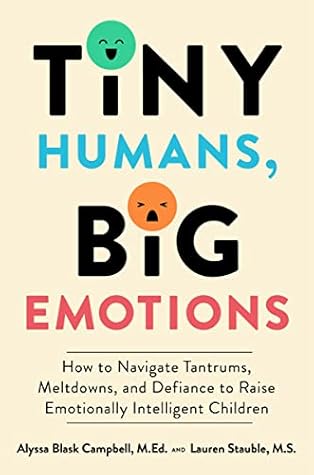More on this book
Community
Kindle Notes & Highlights
Read between
September 15 - September 17, 2025
Relationships change us, reveal us, evoke more from us.
“Sadness doesn’t feel like a part of regular life?” she asked.
The more I ran, the more I began to wonder what I was running from. Then a friend reframed my question: “I wonder what you’re running to?”
So when I really pause to consider what I want for my child, for your child, and for the children all around us, I want them to have the tools to navigate and process the inevitable hard stuff so they’re able to live a life that feels connected, compassionate, and curious.
All this is to say, when big emotions surface for the children in our lives, we have the power to decide how to respond, rather than react on autopilot. We can choose to respond in a way that leads to emotionally intelligent communities.
The brain is designed to handle a reasonable amount of stress, but chronically stressful environments can have a negative impact on the relationship between the survival brain and the rational thinking brain, and therefore on learning and development.
(Understanding context is a social skill that children have to be taught.)
Notice your reaction. Bring awareness to your fears. Keep an eye on who is in the driver’s seat.
Throughout life, we’re taught which emotions are socially acceptable to have or not have, to express or suppress, and how much to pay attention to them or ignore them at any given moment.
You can either be the thermometer and read the temperature of the room and join it, or you can be the thermostat and set the temperature. You have the power to bring the calm.
We can’t plan when, or who, or how someone will have a big feeling, but we can expect that it will happen.
Kids want to connect with us, and sometimes the way they subconsciously try to connect can feel annoying or inconvenient. It might feel mischievous or seem like they’re pushing our buttons intentionally. In reality, they are signaling a need for connection.
Punishment removes children from the teaching and learning context by seeking to cause hurt, loss, and/or isolation in the hopes it will make the child think twice before repeating the same mistake in the future.
What happens when there isn’t an external reward? Will that “good” behavior still show up? Rewards often elicit a dopamine response in the brain. The tricky thing about dopamine is that when we get some of it, our body wants more, and then to feel as good as it did the last time, it wants even more, which can result in needing further and ever-changing rewards to continue to get the same behavioral result.
The mental load of keeping track of what everyone is doing, needs, and has, while anticipating what’s to come, can be absolutely overwhelming.
Kids do things all the time that trigger us. They do things that are annoying and frustrating.
Give yourself grace. Know that this is hard work, and it takes time and intention. Remember, we’re not looking for perfection.
Plan for everything to take longer than it usually does. Plan for big emotions to happen more often than usual.
Somehow, we’ve come to equate success with not needing anyone. Many of us are willing to extend a helping hand, but we’re very reluctant to reach out for help when we need it ourselves. It’s as if we’ve divided the world into “those who offer help” and “those who need help.” The truth is that we are both.


